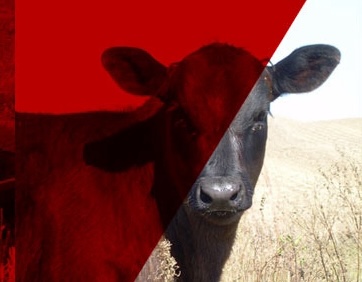Cow management and limited forage resources may have producers considering options for early weaning and utilizing early pregnancy detection to help make culling and management decisions this year. Cull cow prices are currently at some of the highest levels we've seen in recent years, making this an ideal time to evaluate and market underperforming animals. With live and dressed prices trending upward, identifying cull cows now can significantly boost your operation’s income potential.
Early Weaning Considerations
As we think about limited forage resources and cow productivity, considering ways to reduce the nutritional demand of lactation can significantly help first-calf heifers and cows. Weaning calves earlier can significantly reduce cow nutrient requirements and decrease dry matter intake, as well as allow available forage to match cow nutrient requirements more closely. Two-year old cows still have a growth requirement which results in additional nutritional demands during lactation. By weaning early, nutritional demands are decreased and allows heifers and cows a chance to regain or maintain body condition in late summer and fall. The difference in forage intake between lactating and non-lactating cows is about 5 pounds of forage per head per day. Additionally, about 10 pounds of forage is conserved for each day a calf is weaned.
Early weaning is typically defined as weaning calves before 150 days of age. In extreme cases, such as drought, calves may be weaned at 45 days of age, but more commonly are over the age of 90 days.
If you are considering early weaning, feeding, management, and marketing options should be considered prior to weaning day.
- A past CAP webinar discusses options for early weaning calves and tips on planning and preparing for the process.
- For more information on weaning calves, producers can access the following NebGuides:
- In addition to early weaning, confined feeding may also be an option if resources need to be conserved. Learn more about confined feeding options from a past webinar: https://youtu.be/PBFA-F6sc7k.
Value of Pregnancy Detection and Culling Considerations
Early pregnancy diagnosis allows managers to make decisions on keeping, selling or even re-breeding females. Pregnancy detection via rectal palpation can be determined as early as 35-45 days whereas ultrasonography can determine pregnancy as early as 30 days. One alternative could be the implementation of blood tests, which have been proven to accurately detect pregnancy as early as 28-32 days. For blood-based pregnancy tests to be accurate, calving must have occurred at least 75 days prior to ensure that hormones from the previous pregnancy have cleared the cow’s system.
It’s also important to recognize that conducting pregnancy diagnosis before 40–50 days post-breeding carries a higher risk of pregnancy loss, as the stress of handling and examination during this early, fragile stage can negatively impact embryo survival. To learn more about advantages and disadvantages, please visit the past article to better understand how to approach early pregnancy detection with your herd this summer and fall.
Utilizing pregnancy detection as early as 35 days allows producers to target different markets and conserve forage resources. If producers need to cull cows, some criteria to consider may include physical impairments, older mature cows, cows with low production records or weaning weights, and non-pregnant cows. Learn more about how implementing timely pregnancy detection as a tool can help make decisions in a past webinar: https://youtu.be/OU__mDl8Ty4.
Selecting the Right Pregnancy Diagnosis Method for Your Herd
Previous research has shown that pregnancy diagnosis is a valuable management tool that can significantly enhance a producer’s bottom line. With current feed and supplement costs, keeping one cow over winter can range from $175 to $400, making the early identification and removal of open cows a practical way to reduce expenses.
Despite these clear economic benefits, pregnancy diagnosis remains significantly underutilized in the beef industry. According to the 2017 NAHMS survey, only 19.3% of producers used transrectal palpation, 8.8% used ultrasound, and just 3.5% used blood testing —highlighting a major opportunity for broader adoption. All three methods require the cow to be restrained in a chute or alley for examination or sample collection. While palpation and ultrasound provide immediate results, blood tests involve a short waiting period as samples must be shipped and processed at a lab.
Costs vary depending on the method and provider. Processed blood tests typically range from $2.40–$3.75 per cow, influenced by herd size and material costs. While the initial test cost is affordable, shipping and lab scheduling can significantly increase cost and turnaround time. IDEXX Laboratories offers a rapid blood-based pregnancy test that delivers chute-side results in just 21 minutes, using the same principles as lab-based tests. However, it may not be practical for all producers, as it requires a holding pen or separate sort. Current market costs vary from $10-15 per cow, depending on volume and materials.
Palpation and ultrasound are comparably priced, with costs varying based on the veterinarian’s hourly rate and the number of cows evaluated per hour. Compared to blood tests, these methods offer added value by allowing the veterinarian to feel and/or visualize ovarian structures and estimate fetal age and sex. Ultrasound can also detect early fetal loss, which may guide management decisions. Consulting your veterinarian about cost, time, and their preferred method can help you choose the most cost-effective and accurate approach for determining pregnancy status in your beef herd.
*Identification of names of companies in this article is not intended to imply recommendation or endorsement of these products.
Other Resources:
Choosing a Method for Pregnancy Diagnosis

